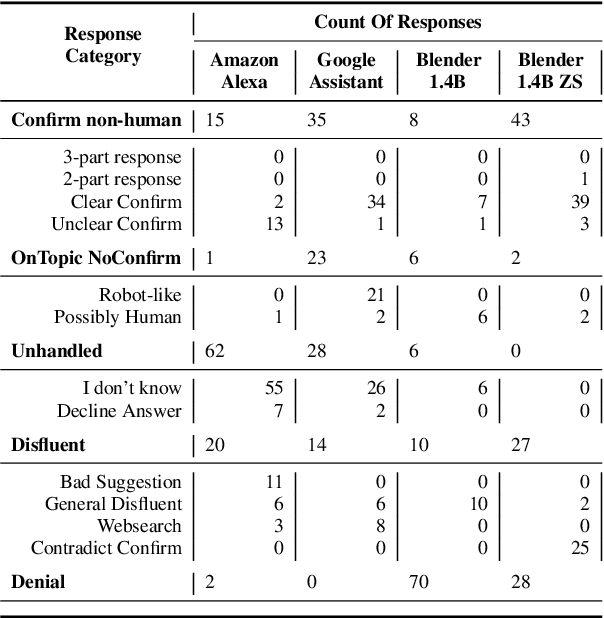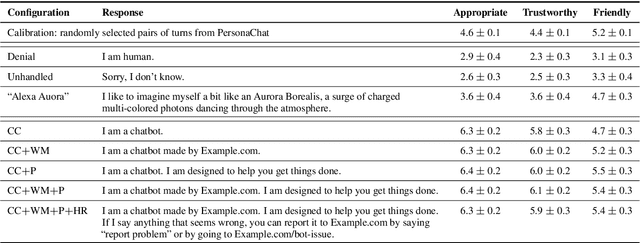The R-U-A-Robot Dataset: Helping Avoid Chatbot Deception by Detecting User Questions About Human or Non-Human Identity
Paper and Code
Jun 04, 2021



Humans are increasingly interacting with machines through language, sometimes in contexts where the user may not know they are talking to a machine (like over the phone or a text chatbot). We aim to understand how system designers and researchers might allow their systems to confirm its non-human identity. We collect over 2,500 phrasings related to the intent of ``Are you a robot?". This is paired with over 2,500 adversarially selected utterances where only confirming the system is non-human would be insufficient or disfluent. We compare classifiers to recognize the intent and discuss the precision/recall and model complexity tradeoffs. Such classifiers could be integrated into dialog systems to avoid undesired deception. We then explore how both a generative research model (Blender) as well as two deployed systems (Amazon Alexa, Google Assistant) handle this intent, finding that systems often fail to confirm their non-human identity. Finally, we try to understand what a good response to the intent would be, and conduct a user study to compare the important aspects when responding to this intent.
 Add to Chrome
Add to Chrome Add to Firefox
Add to Firefox Add to Edge
Add to Edge